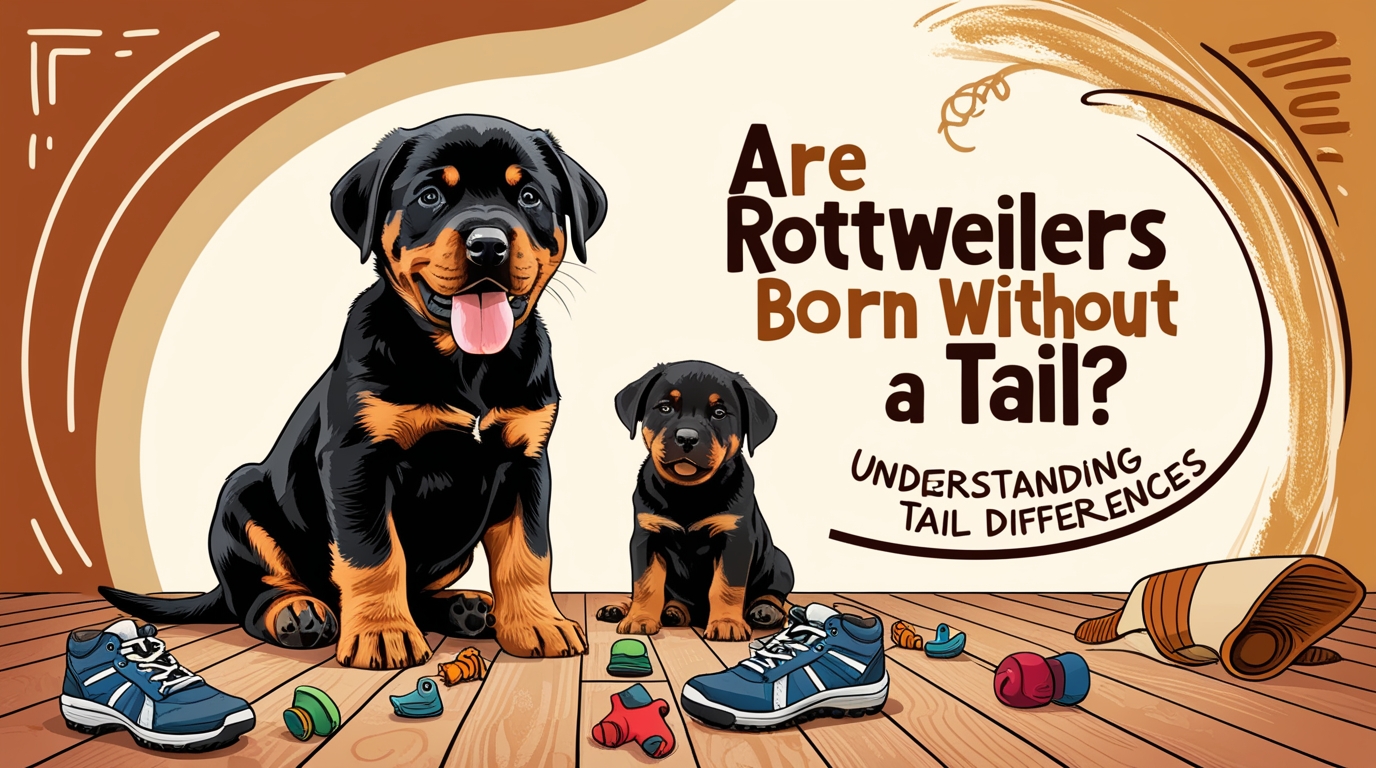Are Rottweilers Born Without a Tail? Understanding Tail Differences

Introduction to Rottweiler Tails
One common question about Rottweilers is whether they are born without a tail. Understanding the natural state of a Rottweiler’s tail can help prospective and current owners better appreciate the breed’s characteristics and the implications of tail docking practices. This article explores whether Rottweilers are born without tails and provides insight into the history and current practices surrounding tail docking.
Natural Tail of Rottweilers
Rottweilers are not born without tails. Typically, Rottweilers are born with full, natural tails. These tails are an integral part of their anatomy and serve various functions, including communication, balance, and expression of emotions. The presence of a tail is normal for the breed and plays a role in their overall health and behavior.
Tail Docking History and Practices
Historically, tail docking has been a common practice for Rottweilers. This procedure involves removing a portion of the tail, usually performed when the puppies are between 2 to 5 days old. Tail docking was traditionally done for several reasons:
- Breed Standards: Tail docking was once a requirement to conform to breed standards set by various kennel clubs.
- Injury Prevention: It was believed that docking could prevent tail injuries in working dogs, especially those involved in herding or guarding tasks.
- Cosmetic Preferences: Tail docking was often done to achieve a specific appearance deemed desirable by some breeders and owners.

Legislation and Changing Attitudes
In recent years, there has been a significant shift in attitudes towards tail docking. Many countries have introduced legislation banning or severely restricting the practice due to animal welfare concerns. This change reflects a growing recognition that tail docking is unnecessary and causes pain to the puppies. Some key points include:
- Animal Welfare: Legislation now often prohibits tail docking for cosmetic reasons, focusing on the welfare and well-being of the dogs.
- Natural Tails: In regions where docking is banned, Rottweilers with natural, undocked tails are becoming more common. These tails are fully functional and contribute to the dog’s balance and communication.
- Breed Standards: Some breed standards have been updated to accept Rottweilers with natural tails, reflecting the changing attitudes towards this practice.
Comparing Docked and Undocked Tails
| Tail Type | Description | Advantages |
|---|---|---|
| Docked Tail | A portion of the tail is removed, typically performed when the puppy is very young. | Historically seen as meeting breed standards and preventing injury. |
| Undocked Tail | The tail is left intact, allowing the dog to retain its natural length and functionality. | Provides better balance, communication, and is considered more humane in regions with docking bans. |
Conclusion
Rottweilers are generally born with full tails, and the practice of tail docking, while historically common, is increasingly viewed as unnecessary and inhumane. In many parts of the world, tail docking is now banned, and Rottweilers with natural tails are more frequently seen. Whether docked or undocked, understanding the natural state of a Rottweiler’s tail is essential for appreciating the breed and ensuring their well-being.
For more information on Rottweilers and their care, visit our main page or check out our dog category page.
External Resources:





